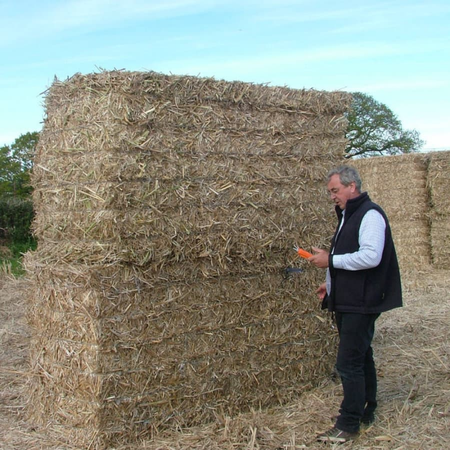I model projections of bioenergy crop yield and energy, carbon capture, and environmental impacts, and in the last year myself and Astley Hastings have published three papers on Miscanthus x giganteus as a bioenergy crop. What I have discovered is that in England miscanthus is a robust bioenergy crop against weather events, it sequesters soil carbon on low grade agricultural land, and has a ready market of small power stations to use it, yet its further development as bioenergy feedstock relies on breeding new cultivars to increase yields and cropping area.
Miscanthus is perennial and projections for bioenergy policy have traditionally assumed a mature crop. Mature English crop yields are commonly 12 t ha−1 year−1, second‐third‐year juvenile harvests average 7 t ha−1 year−1. From surveying crop age and yield from commercial growers, this means that a surrounding 10 km by 10 km area of distributed crop age averages 9 t ha−1 year−1. A landscape with recent miscanthus uptake, means many juvenile crops have not attained full yield and on average we can expect a region to contain stands of a mix of ages which brings down the mean yield when policy makers need a spatial composite value. New cultivars are needed to increase yield against an increasing south-east England risk of drought under a warming climate.
So far miscanthus has been propagated by rhizome, a slow process meaning wait times for growers wishing to plant a new crop. Small rural bioenergy power stations rarely have sufficient miscanthus bales to burn so augment using less efficient wheat straw bales. To combat this, breeders are developing seeded varieties to increase provision of miscanthus, thereby lowering price and encouraging uptake.
From surveying growers, their main reason for investment in miscanthus is not financial return, but relates to its low requirement for field operations, low maintenance cost and regeneration. This offers a solution for fields with difficult vehicular access, it also offers a solution to the social acceptability of a crop near villages and playgrounds (related to spray operations and crop vandalism). Due to low field operations plus a large amount of crop residue attracting spiders and beetles, wildlife is abundant in these fields, largely undisturbed except for harvest. This contributes to the greening of agriculture; fields are also used for gamebird cover adding farm income and fields are used for educational tours. What I discovered is that growers are pragmatic people and miscanthus is a useful crop, it is increasingly seen as a practical solution to farming and social, as well as renewable energy issues.
Anita Shepherd, SBS Biol. and Env. Sciences Modelling Group



Did you know biodiesel can be derived from used cooking oil? Yes, used cooking oil is used to make biodiesel. Ever wondered what happens to the leftover oil that you pour down the sink? It either causes sewage or flows through other water bodies. Then why don't we utilize this used cooking oil? You must be wondering how right? All you have to do is store the used cooking oil in a safe container and donate it to biodiesel manufacturers like Aris bioenergy. The used cooking oil that you donated will be used for the making of biodiesel.